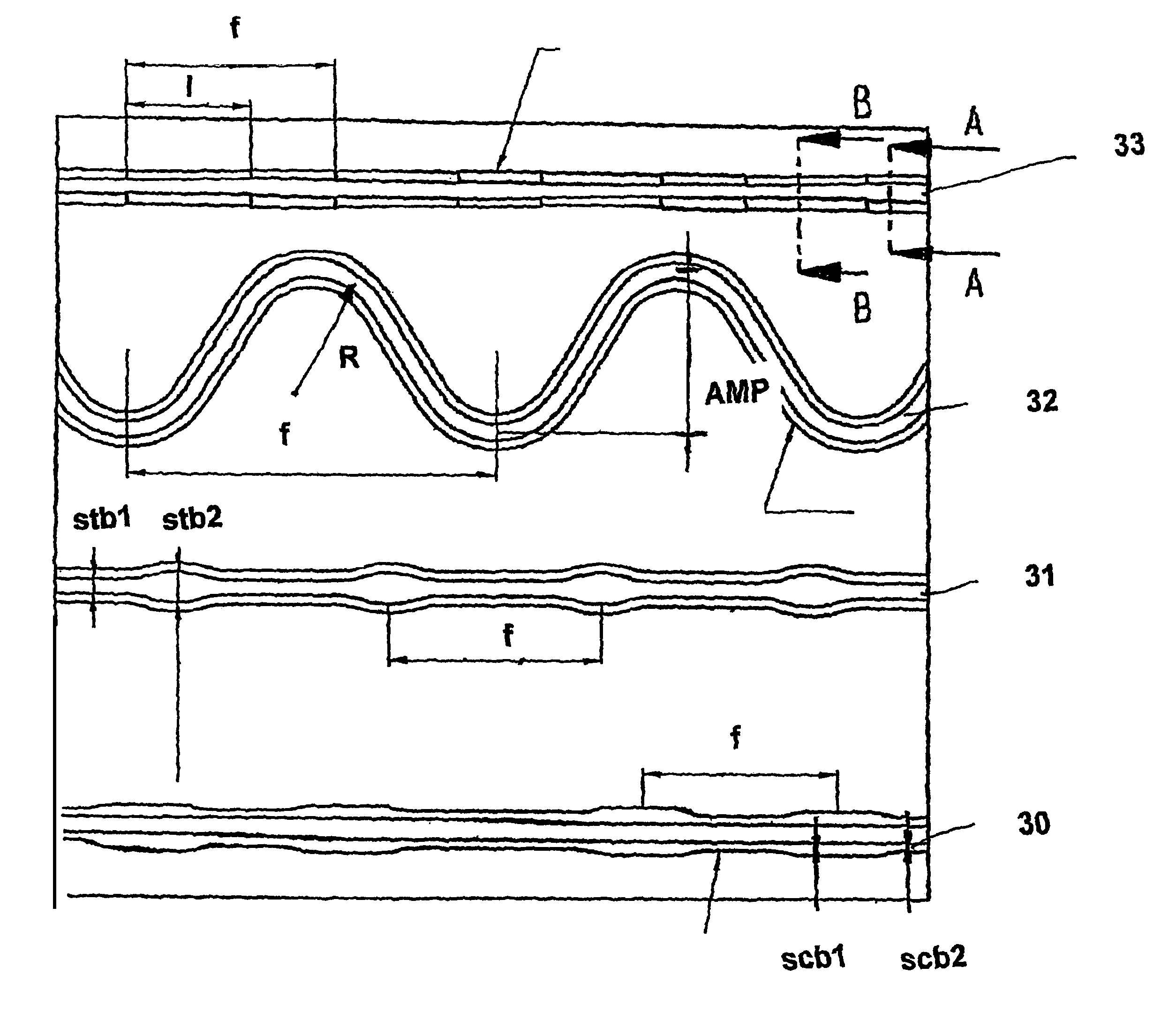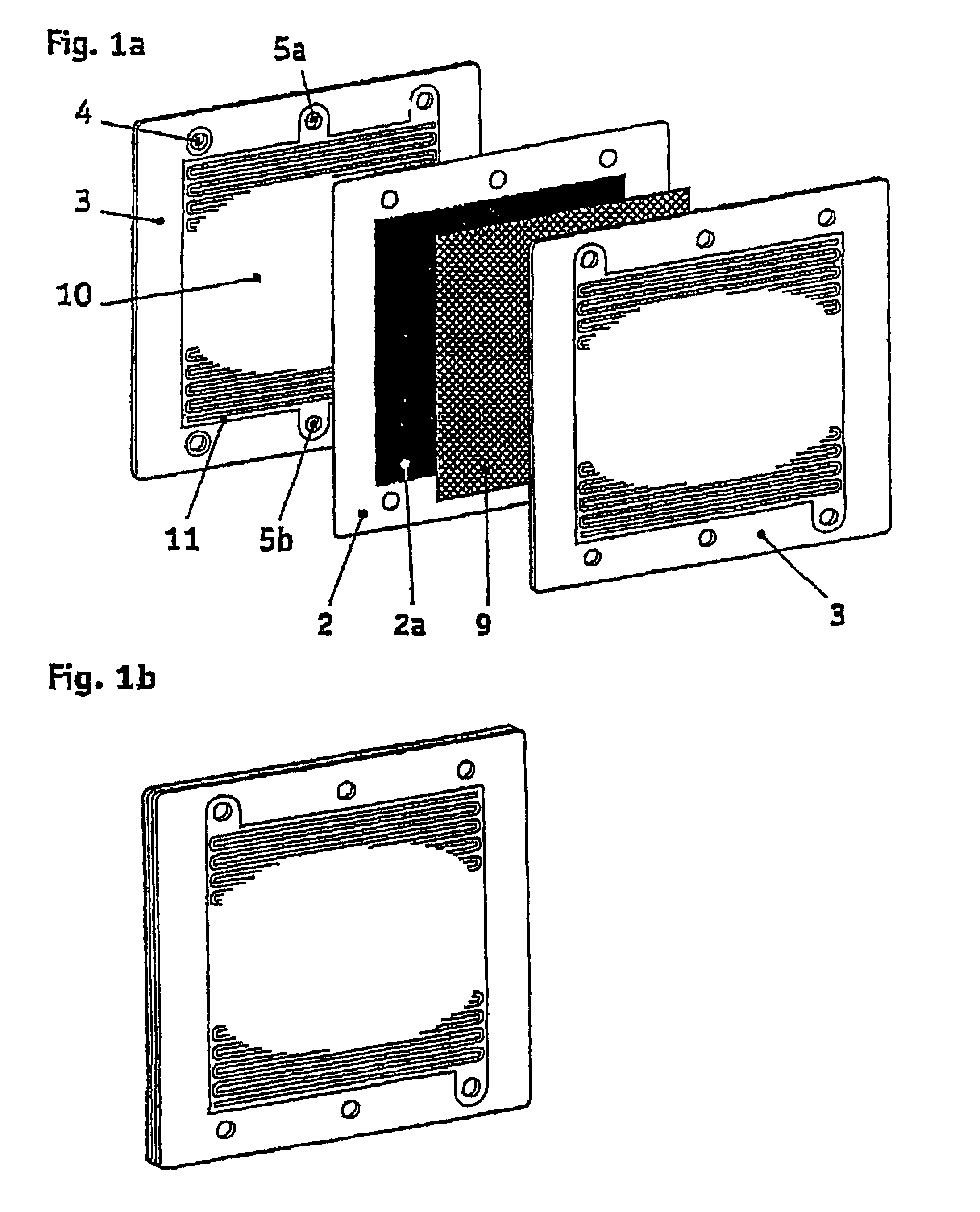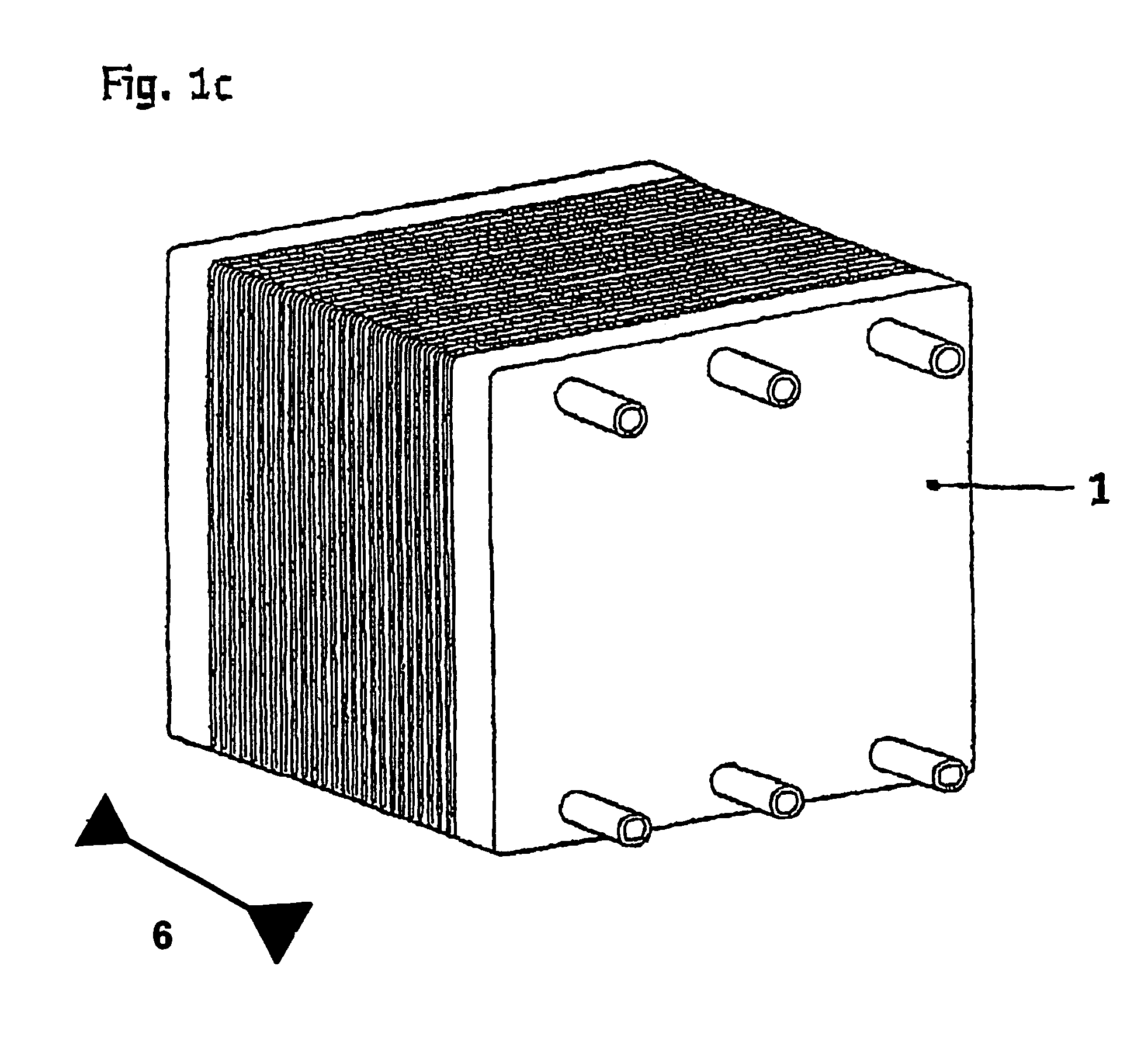Electrochemical system with fluid passage integrated within a sealing bead
a technology of electrochemical system and fluid passage, which is applied in the direction of electrochemical generator, electrochemical components, electric apparatus, etc., can solve the problems of hsub>2 /sub>occurring, affecting the operation of electrochemical cells, and increasing the cost of mechanical compression of hydrogen
- Summary
- Abstract
- Description
- Claims
- Application Information
AI Technical Summary
Benefits of technology
Problems solved by technology
Method used
Image
Examples
Embodiment Construction
[0051]FIG. 1a shows the construction of an electrochemical cell, as shown in FIG. 1b. A plurality of electrochemical cells form in layers the region of an electrochemical cell stack 1 arranged between end plates (see FIG. 1c).
[0052]An electrochemical cell 2 with its usual components can be seen in FIG. 1a and has for example an ion-conducting polymer membrane, which is provided in the central region 2a with a catalyst layer on both sides. Two bipolar plates 3, between which the polymer membrane is arranged, are provided in the electrochemical cell. A gas diffusion layer 9, which has dimensions so that it can be accommodated in a recess of the bipolar plate, is also arranged in the region between each bipolar plate and the polymer membrane (optionally, depending on the fine structuring of the bipolar plate). In the assembled state of the electrochemical cell (FIG. 1b), the electrochemically active region of the electrochemical cells, which is covered essentially by the gas diffusion ...
PUM
| Property | Measurement | Unit |
|---|---|---|
| Mechanical properties | aaaaa | aaaaa |
| Resilience | aaaaa | aaaaa |
Abstract
Description
Claims
Application Information
 Login to View More
Login to View More - R&D
- Intellectual Property
- Life Sciences
- Materials
- Tech Scout
- Unparalleled Data Quality
- Higher Quality Content
- 60% Fewer Hallucinations
Browse by: Latest US Patents, China's latest patents, Technical Efficacy Thesaurus, Application Domain, Technology Topic, Popular Technical Reports.
© 2025 PatSnap. All rights reserved.Legal|Privacy policy|Modern Slavery Act Transparency Statement|Sitemap|About US| Contact US: help@patsnap.com



